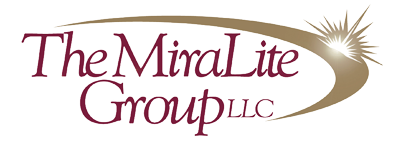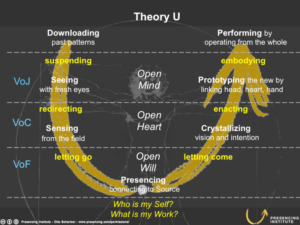by Barbara Murphy-Warrington, ©2018; revised and adapted ©2019
At the 34th Sunray Mediation Society Elder’s Gathering in 2018, I was invited, along with some Sunray students, by Venerable Dhyani Ywahoo, spiritual director of Sunray, to lead a discussion on Transforming the Mindset of Dominion-Over. Engaging in this discussion and work is deeply-connected to the diversity inclusion & equity (DEI) work I’ve chosen to do professionally over the last 20+ years, as it deepens the exploration of why the work of DEI is critically important for workplaces, institutions, communities and governments that seek to be truly beneficially-effective and impactful for all those with whom/which they serve and interact, not only in the U.S. but also around the world.
Effects of Dominion-Over Mindset
I believe the mindset of dominion-over can be traced to old philosophies and science that essentially described the Earth and human beings as insignificant in the grand cosmos, and that “man” was given dominion over the Earth and all of nature. Some data were presented at the Gathering on the impact that this mindset has had upon indigenous people, “racialized” groups (a recent substitute for use of the term “people of color”), women, children, and the working and middle class in this country. In fact, all living beings and the Earth have been detrimentally impacted by this mindset.
We sought to convey how this mindset manifests through telling the stories of the lived reality of far too many human beings. We spoke of:
• The numerous Native American women who are raped and go missing;
• Black men and boys whose color makes them a target of unprecedented hate, attack, and incarceration within the U.S.;
• Women of all races/ethnicities/colors subjected to chauvinistic ways of being;
• The loss of the “American Dream” and economic security by middle-class white men who believed that they were protected and favored in a society that continues to try to base itself upon white privilege—one race, one religion, one way of life above all others—leading to an increase in suicide among this group (see the Additional Resources at the end of this Blog for a description of this privilege by Wellesley Professor Peggy McIntosh); and
• Within the natural world, the stories of depletion, destruction, over-consumption, and degradation of the resources of the Earth are there for us all to see.
Many more examples of the effect of dominion-over mind (e.g., about different “gendered-identity” or “able-bodied” individuals, socio-economic status, ethnic or religious minorities) within the family, religion, society, workplace, education, and government systems could have been shared.
Through the Peacekeeper Teachings, Sunray has sought to transform this mindset in different spheres and to teach collaboration and cooperation for the common good of all the diverse people of the world. Over a period of years, Venerable Dhyani Ywahoo, with the late Rev. Dr. Louise Diamond and Rev. Margie Joy Walden, gave voice to the painful stories of the indigenous people of the Americas, as well as other marginalized and oppressed people around the world, and sought restoration of rights and recognition of marginalized peoples.
Dr. Diamond and I brought diverse groups of people together from more than 25 countries in workshops in which the Peacekeeper teachings, a form of multi-track diplomacy, Akido, and enlightened leadership, were combined to teach them how to value and respect the diversity of the world’s people, and to lead others in transforming dominion-over by starting first with one’s own mind.
Data are not destiny. Once you know the true stories and lived reality of other people, they no longer are a stranger. We believed that through sharing our stories and collectively engaging in exploring who we truly are and the positive futures we want to bring forth for all, new stories—based upon cooperation, mutuality, appreciation, collective life-force enhancing action, and gratitude—will take shape and become our new reality, while the old world of dominion-over implodes as a result of its own anti-nature essence.
How Are We All Connected?
Indigenous wisdom teachers around the world have said we are living within a “dream”. Today, we see a coming together of these ancient wisdom teachings and science. Many quantum- and astro-physicists now agree with this ancient wisdom, and they describe it in scientific terms as a “conscious hologram” or “simulation” that we collectively have created. Both indigenous wisdom and these scientists agree that we are quickly reaching a tipping point in which the Earth will no longer be able to sustain life, unless we change how we relate to the living environment and to each other.
We are living within and part of a field of energy which scientists today acknowledge and call the unified or Higgs field—a field about which indigenous people have always known. We are collectively creating our reality. What we feed into this field—whether consciously or unconsciously—is what will grow within and shape our lives.
Now multiply this by all the human beings on Earth. Too many of us are unconsciously participating in a dream or simulation in which the dominate rules right now in many societal institutions are not life-force enhancing for all living beings and the Earth.
Being the Change We Want to See in the World
How do individuals and leaders committed to DEI and to creating peace across our differences bring forth and embody the mindset of collective, cooperative, life-force enhancing mindset for the benefit of all beings and the Earth? R. Buckminster Fuller believed that we do not fundamentally change or transform something by fighting the old or existing reality. Instead, we build a new model or world that makes the old obsolete.
To change something, you must seek understanding of its roots. Dominion-over worldview has several key roots—two are mentioned below that I believe have a profound impact upon all living beings:
1. This worldview has its philosophical roots in the belief that humans were given dominion over nature (as nature was seen as not being intelligent) and the belief in “survival of the fittest”; and
2. Scarcity-thinking giving rise to competition for control of nature and resources, which thinking denies that we live in an abundant universe.
The first step to changing dominion-over mindset is a challenging yet critical one. It is very easy for us as human beings to see what others are not seeing about themselves. It is much harder for each of us to look within to see how we are all collectively contributing to this reality. To transform the view of dominion-over, we must first transform our own minds, our own behaviors, our own interpretations of the world.
We all must root out the views and beliefs which feed dominion over within ourselves, replacing those outworn views with views and behaviors that are harmonious with nature, that are life-force enhancing, and that reflect a clear understanding we are all interdependent and interconnected. See Additional Resources listed at the end of this reflection that I have turned to as aids to my exploration and work with personal/individual/group transformation. (Many more resources are available through an Internet search).
As humans, we are all really one. DNA analysis has shown that we humans are 99% identical. We really are one…something indigenous wisdom has known for eons. The differences that seem so great to us—skin color, facial features, physical build, or personality—are ways we’ve used to create identity groups and shared cultures, to create separation from each other, and power over other groups and cultures.
To manifest right relationship and the “new world” mindset, here are four important additional steps I believe we can take, beginning in this very moment:
1. We energize a clear vision for the benefit of all beings. Voices of Our Ancestors, by Dhyani Ywahoo, pp.84-85, 88, 90, 93 95, 99 (what are we feeding into the field?).
2. We must consider what we knew, have forgotten and now must remember—our original instructions. Our original instructions did not include the worldview of dominion over, the unfettered right to over-consume and privately exploit the shared natural resources of the Earth; or the belief that one group of people or social class as being chosen and given the right to reign over all other human beings and the Earth. Voices of Our Ancestors, pp. 257-259.
3. We must dream the world we want to live in that’s beneficial to all and then act from that place of the future…as the emerging future is already here now, as I’ve shared from the work of MIT lecturer/professor Otto C. Scharmer and the Presencing Institute.
4. We must embrace compassion and love for all life.
I hope you will take this journey with me!
—Barbara
ADDITIONAL RESOURCES
In response to request for more information on dominion over, I offer these resources for us to critically ponder, guarding against our own personal emotional reaction and defense for the purpose of deepening our capacity as leaders to be and act with authenticity, integrity, and awareness:
1. See the Diversity Equity & Inclusion Resources section of MLG’s website
2. Voices of Our Ancestors
3. White Privilege: Unpacking the Invisible Knapsack
4. Unpacking the Invisible Knapsack of Settler Privilege
5. Privilege vs. Complicity
6. On Being with Krista Tippett: Rami Nashashibi and Lucas Johnson, Community Organizing as a Spiritual Practice
7.For further exploration of the concept of a simulation, see, for example: You’re living in a computer simulation, and math proves it. Gizmodo. Retrieved 29 October 2016; Bostrom, Nick (2003); Are You Living in a Computer Simulation?, Philosophical Quarterly. 53 (211): 243–255; Nick Bostrom, Professor of Philosophy at Oxford University, 2003; Davis J. Chalmers The Matrix as Metaphysics, Dept of Philosophy, U. of Arizona; paper written for the philosophy section of The Matrix website; and comments made by astrophysicist Neil Degrasse-Tyson of the Hayden Planetarium.
Note: Views with references shared here are solely those of the author’s intepretations.





